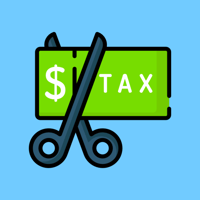If you do not have children and it is your first tax return in Canada, to apply for the GST/HST...
📝 How to Fill Out the TD1 and TD1-ON Forms in Ontario (2025 Guide)
If you're starting a new job in Ontario or switching employers, one of the first things your employer will ask you to complete is the TD1 and TD1-ON forms. These federal and provincial forms determine how much income tax should be deducted from your pay.
Filling them out correctly is essential—under-claiming means overpaying taxes, while over-claiming could leave you owing at tax time.
Here’s a step-by-step guide to help you complete them with confidence.

What Are TD1 and TD1-ON?
-
TD1 (Federal): Declares your federal personal tax credits.
-
TD1-ON (Ontario): Declares your Ontario provincial tax credits.
You need to complete these if:
-
You start a new job or receive a pension
-
Your personal situation changes (dependants, disability, etc.)
-
You want to increase or reduce the tax withheld
🟦 Step-by-Step: Filling Out the Federal TD1 (2025)
📥 Download: Federal TD1 2025 Form (CRA)
-
Line 1 – Basic Personal Amount
-
Enter $16,129 (everyone is entitled to this unless they make more than $177,882, in which case there is a reduction that needs to be calculated on the TD1-WS Worsheet).
-
-
Lines 2–12 – Other Credits (only if they apply to you)
Examples:-
Line 3: Age amount if you're 65+ and earn under $45,522 → $9,028
-
Line 4: Pension income amount → Up to $2,000
-
Line 6: Disability amount → $10,138
-
Line 10: Canada caregiver for adult dependants → Up to $8,601
-
-
Line 13 – Total Claim Amount
-
Add lines 1 to 12. Your employer uses this amount to determine tax deductions.
-
-
Additional Fields in Page 2
-
Tick boxes if you have multiple jobs or if your total income will be under your claim amount, so no tax should be withheld.
-
🟩 Step-by-Step: Filling Out the Ontario TD1-ON (2025)
📥 Download: Ontario TD1-ON 2025 Form (CRA)
-
Line 1 – Basic Personal Amount
-
Enter $12,122 (standard for all Ontario residents).
-
-
Lines 2–9 – Additional Credits (if applicable)
Examples:-
Line 2: Age amount → $6,223 if you're 65+ and earn less than $46,330
-
Line 4: Disability amount → $10,298
-
Line 5: Spousal amount → Up to $10,823
-
Line 6: Eligible dependant → Up to $10,823
-
-
Line 10 – Total Claim Amount
-
Add lines 1 to 9. This will be used for Ontario tax deduction calculations.
-
⚠️ Tips and Common Mistakes
✅ DO:
-
Use current year amounts (see above).
-
Notify your employer if your situation changes during the year.
🚫 DON’T:
-
Claim credits twice (federal and provincial amounts are different).
-
Forget to update your TD1 forms if you have a new job or reduced income.
🧍♂️ What is a Non-Resident?
The forms make mention of a few sections that apply for non-residents. In the context of Canadian taxes, a non-resident is someone who does not have significant residential ties to Canada. This affects whether you can claim personal tax credits on the TD1 form.
You are likely a non-resident if:
-
You live outside Canada most of the year
-
You do not have a home, spouse, or dependants in Canada
-
You only work temporarily (i.e. less than 183 days) in Canada and return to another country
💡 Optional Adjustments
-
You can ask your employer to withhold more tax (if you have side income) or less tax (if you claim deductions like RRSPs) using:
-
Additional Tax section on TD1 in Page 2
-
Form T1213 (to reduce tax with authorization from CRA)
-
📌 Final Steps
-
Submit to your employer or payer, not the CRA.
-
Keep a copy for your records.
If you're unsure which credits you qualify for, have multiple jobs, or want to make sure your taxes are being withheld correctly, we’re here to help.
👉 Book a free consultation with Toro Accounting and let our team walk you through your TD1 and payroll setup with confidence.
📅 Schedule your call today
📧 Or email us at: office@toroaccounting.ca
Don’t risk owing at tax time—get it right from the start with expert support.
-1.png?width=450&height=150&name=Logo-Square%20(500%20x%20200%20px)-1.png)


